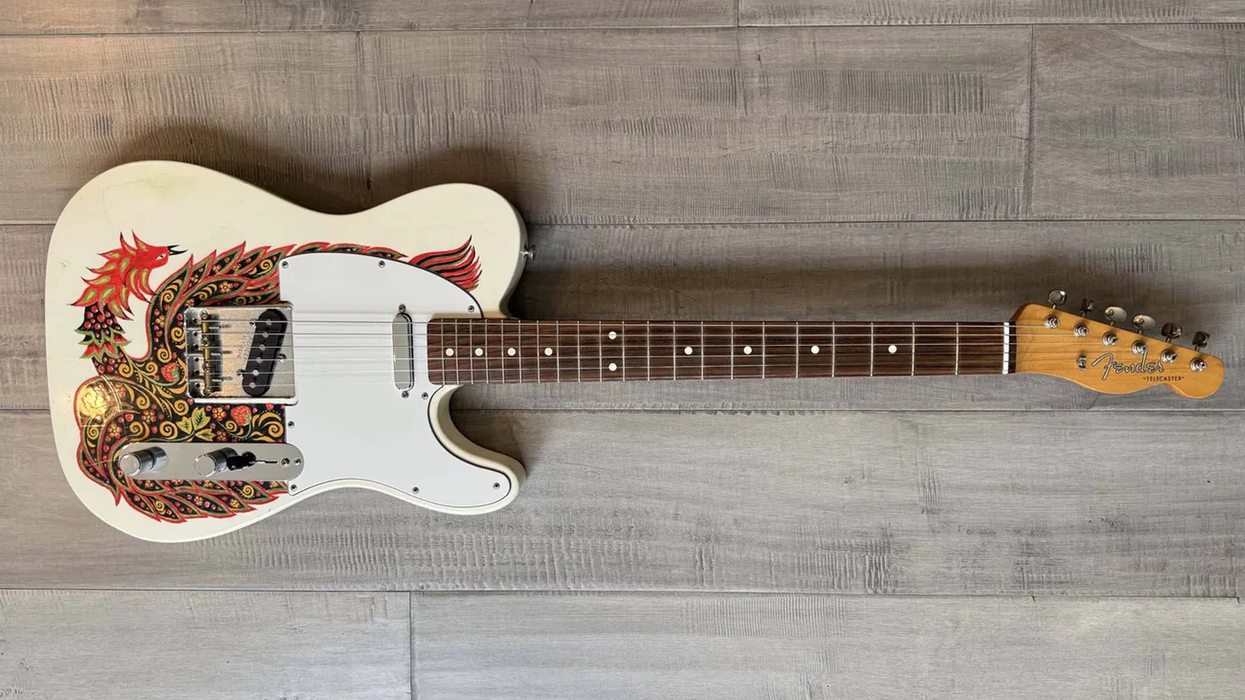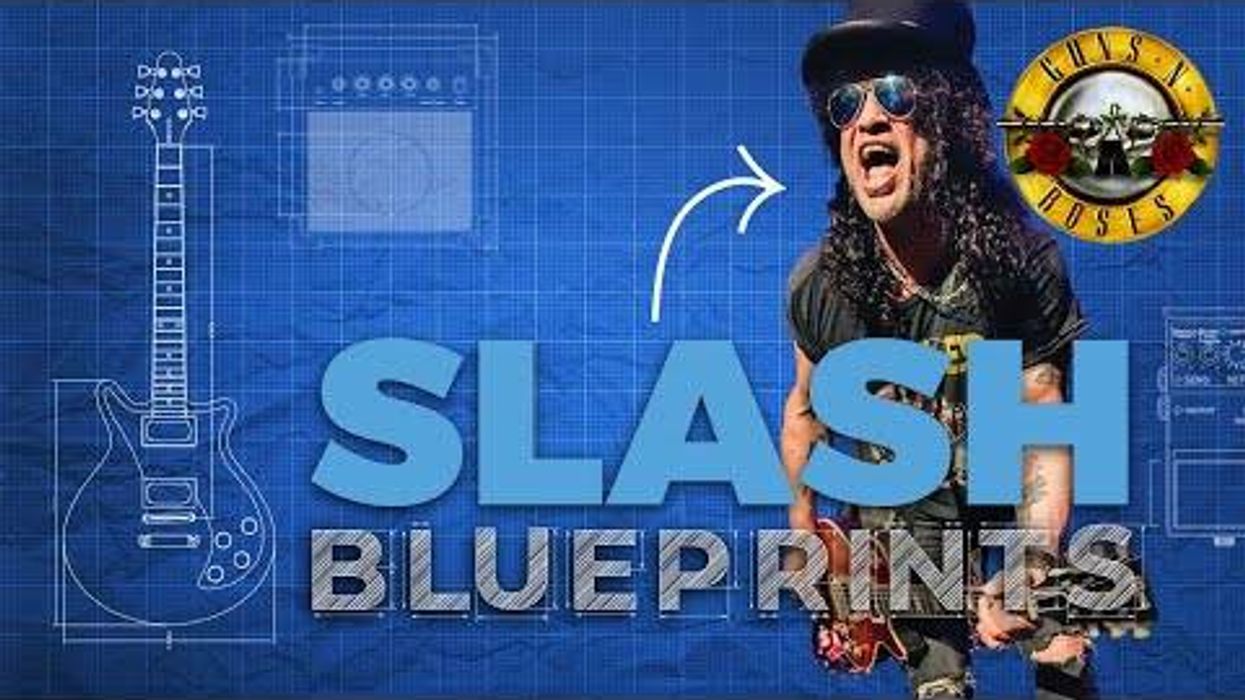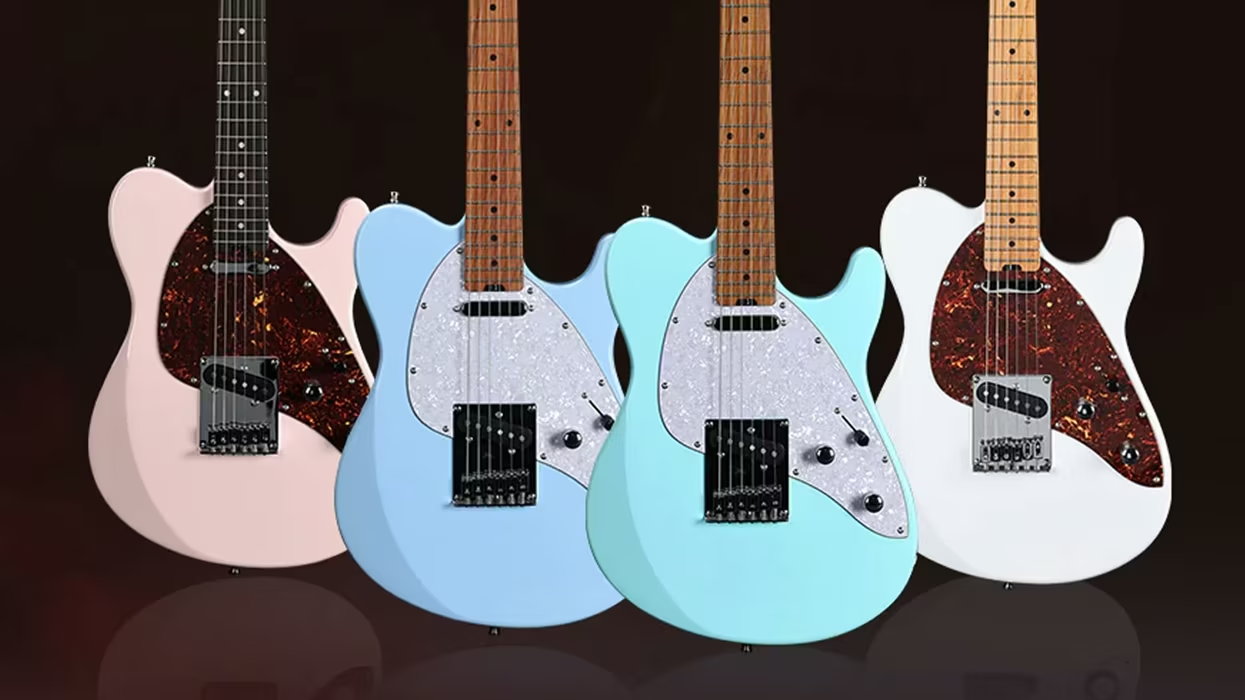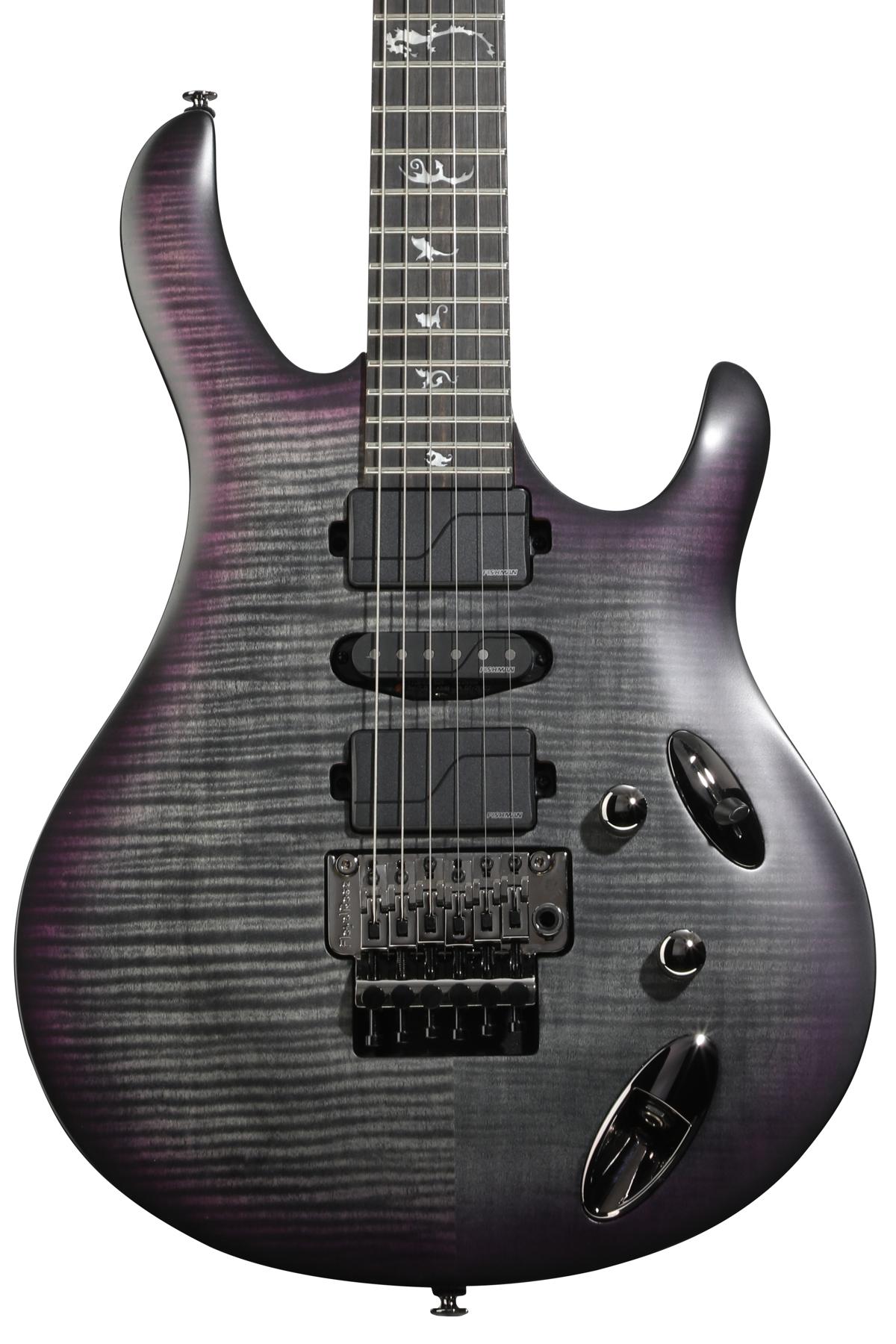There are vintage guitar fans, and then there are vintage Telecaster fanatics. True Telecaster purists turn up their noses at “improvements” like individual string saddles. They snort derisively at contoured bodies and low-noise pickups. The Telecaster design was perfect in the 1950s, damn it, and it’s perfect today.
Does that sound like you? Then move along—there’s nothing to see here.
But if you like the idea of a Telecaster packed to bursting with savvy modern updates, man, have I got an axe for you.
Reet Elite
The American Elite adheres to the classic Tele profile and traditional Telecaster design elements—at least when viewed from the front. Our review model’s body wears a lovely and flawless three-tone burst finish, framed by understated white binding. Its neck and fingerboard are maple, though the model is available with a rosewood fingerboard and in multiple finishes.
But the instant you strap on the Elite, you know you’re not in Vintageland anymore. There’s the comfy body bevel, and the modern neck-body joint with its asymmetric plate. The neck contours are a world apart from an old-school Tele. The neck employs a compound radius (9.5" at the nut, flattening out to 14" up high) and a grip that gradually transitions from C to D shape. The feel is light, slender, and wicked fast.
Well Heeled
Moving over the heel to and from the highest frets is about as effortless as it gets with a bolt-on neck. The medium jumbo frets are immaculately installed, with no rough edges whatsoever. The Elite is built for comfort and speed.
Our review model benefited from an expert setup. It played perfectly right out of the molded plastic case (included). Intonation is excellent, thanks in part to a modern bridge with six chromed-brass saddles. The tuning pegs are also modernized. They lock, and they employ short posts for a sharper string-break at the nut. (No buzzing here!) Another nice detail: the heel-mounted, wheel-style truss rod nut for fast neck-relief adjustments.
Ratings
Pros:
Excellent build. Fast, comfortable feel. Great tones. Noise-free pickups.
Cons:
Not for Telecaster purists.
Tones:
Playability:
Build/Design:
Value:
Street:
$1,799
Fender American Elite Telecaster
fender.com
Not Your Father’s Twang
The Elite sounds terrific, though not quite in an antique Tele way. The redesigned pickups are notably less noisy than traditional single-coils. The neck pickup delivers the jazz-ready warmth you expect from a fine Tele rhythm pickup. However, the bridge pickup’s tone is markedly modernized. It does excellent bright, clean tones, but without some of the characteristic “whine” of the traditional lead pickup. But what it lacks in clangy twang, it makes up for with greater beefiness. (You can definitely play country on the Elite, but the result will probably be more 21st-century Nashville than mid-century retro tones.) The combined pickups have a pretty, acoustic-like airiness.
There’s also a fourth option: A push-push S-1 switch in the volume knob changes the combined-pickup setting from traditional parallel wiring to series wiring. Variations on this scheme have long been popular Tele mods. As usual, this higher-output provides greater level, but darker tones. Some players like this mod because the extra output can drive an amp harder than the traditional configurations. Ironically, players who have come to rely on series mods may require it less here than on most Teles. Every pickup setting provides sufficient power and mass for thick lead tones. You can definitely play heavy riff rock with this guitar.
And don’t get me started on the Elite’s sustain. I expected rich resonance based on how the guitar rang when strummed acoustically. But plugged in, the sustain is nearly surreal. Clean notes last and last. For overdriven tones, tack on several more “lasts.” Check out the final crunchy chord in the demo clip that accompanies the online version of this review. It rings for approximately 47 days. (It felt like that, anyway.) The Elite just doesn’t want to shut up.
The Verdict
Fender’s American Elite Telecaster is a bold update from traditional Teles. It will appeal to guitarists in many styles, but it’s especially suitable for players reared on sleek, modern, hard-rock guitars, and the slim, shapely neck will delight speed demons. The Elite isn’t a tone clone of vintage models, but it compensates with extra output and mass. Considering the Elite’s quality materials, ingenious design details, excellent build quality, and U.S. manufacture, the $1,799 price is reasonable. Well played, Fender!
Watch the Review Demo:









![Rig Rundown: Russian Circles’ Mike Sullivan [2025]](https://www.premierguitar.com/media-library/youtube.jpg?id=62303631&width=1245&height=700&quality=70&coordinates=0%2C0%2C0%2C0)

















